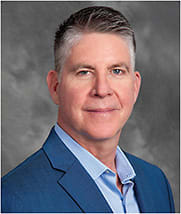David Bragg serves as the president of Ziemer USA and Canada; Ziemer has its headquarters in Port, Switzerland, and a satellite office in Germany. Ziemer manufactures cornea, cataract and therapeutic surgery devices, such as the FEMTO LDV Z8 femtosecond laser system, and diagnostic devices, including the GALILEI platform line.
Ophthalmology Management: What are Ziemer’s latest products for the U.S. market?
David Bragg: Most recently, Ziemer has released an upgrade to our multipurpose FEMTO LDV Z8 laser system, which is designed for cataract, LASIK and corneal therapeutics. The new upgrade has resulted in an improved fragmentation procedure, allowing for a faster surgery.
Additionally, Ziemer launched the Galilei G6 diagnostic system, which combines technology like the Placido topography, Dual-Scheimpflug tomography and optical biometry to offer a comprehensive device for cataract and refractive surgery planning. The Galilei G6 has improved patient flow for preoperative diagnostics as practices can do all their measurements with one device, without having to move patients to other rooms.
OM: Ziemer recently released the Z8 NEO multipurpose laser platform overseas. What are your plans to bring it to the United States?
DB: Our goal is to introduce the NEO to the US market some time in 2022, and we are in the process of submitting the proper paperwork to do that. The NEO will have higher lens fragmentation efficiency, which will reduce cut times and improve the patient-surgeon experience. The NEO will also allow for the integration of our diagnostic tools; it will be an open system that can accommodate a variety of diagnostic devices that assist in surgical planning.
OM: Are there any other upcoming products or applications you can discuss?
DB: We have started the FDA registration process for the CLEAR refractive procedure for vision correction, which can be performed with the LDV Z8 and NEO. We’re excited to bring that extra application to our existing platforms.
Also, we started a great partnership with CorneaGen and, through some combined development, we are looking forward to bringing new applications to the Z8. These applications will permit the Z8 to perform new treatments in corneal therapeutics and we expect these treatments will have a tremendous clinical impact for patients.
Finally, the Aquariuz is a new ablation laser currently available in Europe. The Aquariuz is set apart from other excimer lasers in that it operates at wavelengths that are less absorbed by water molecules, allowing it to be less affected by temperature and humidity within the OR and improving surgical results. We plan to introduce that into the US market soon, though we don’t have an exact timeframe for it.
OM: How has Ziemer fared during the COVID pandemic and lockdown?
DB: Despite many challenges, our team has been unwavering, and we have had continued success and performed exceptionally well in terms of market growth, and have used that success to invest back in the global market. Through the pandemic, people found that their glasses were an obstacle to what they wanted from their careers and personal life. We believe a large uptick in vision-correcting surgery has come from these subsequent lifestyle changes.
OM: What unmet needs are faced by ophthalmologists, and how can Ziemer help with them?
DB: The area we feel we can best assist is that surgeons want to be able to provide their patients with multiple refractive, cataract and therapeutic surgical options without having to continuously invest in capital. This is an improvement to the patient-surgeon experience, and it’s where we continue to focus. OM









